
How to Use LM35 Temperature Sensor: Examples, Pinouts, and Specs
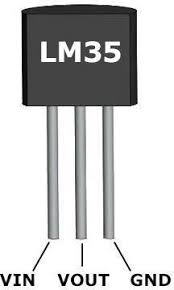
 Design with LM35 Temperature Sensor in Cirkit Designer
Design with LM35 Temperature Sensor in Cirkit DesignerIntroduction
The LM35 is a precision temperature sensor manufactured by Texas Instruments. It provides an output voltage that is linearly proportional to the temperature in degrees Celsius, making it an ideal choice for temperature measurement and control applications. Unlike thermistors, the LM35 does not require any external calibration or trimming, and it offers a high level of accuracy.
Explore Projects Built with LM35 Temperature Sensor
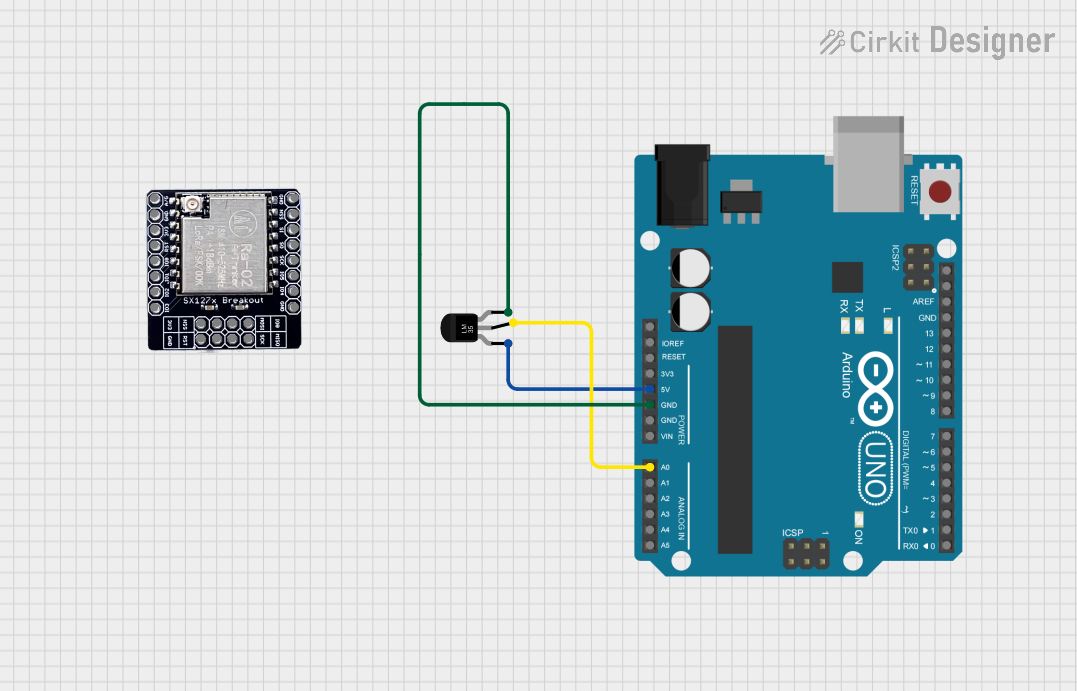
 Open Project in Cirkit Designer
Open Project in Cirkit Designer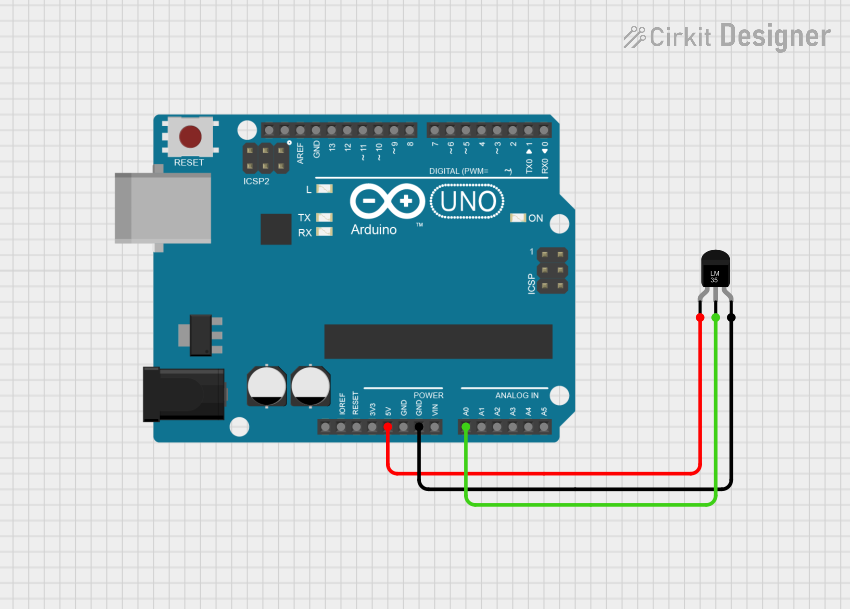
 Open Project in Cirkit Designer
Open Project in Cirkit Designer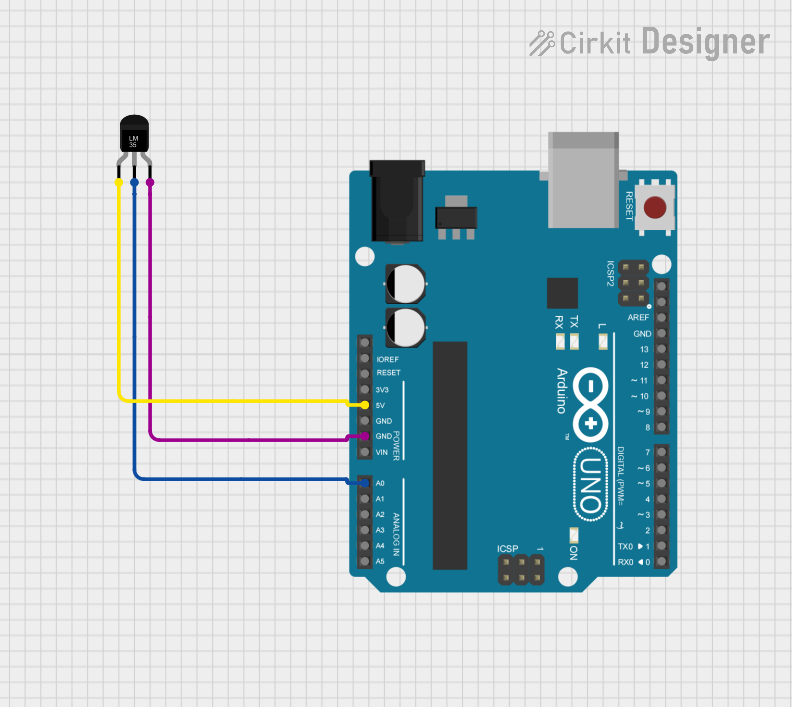
 Open Project in Cirkit Designer
Open Project in Cirkit Designer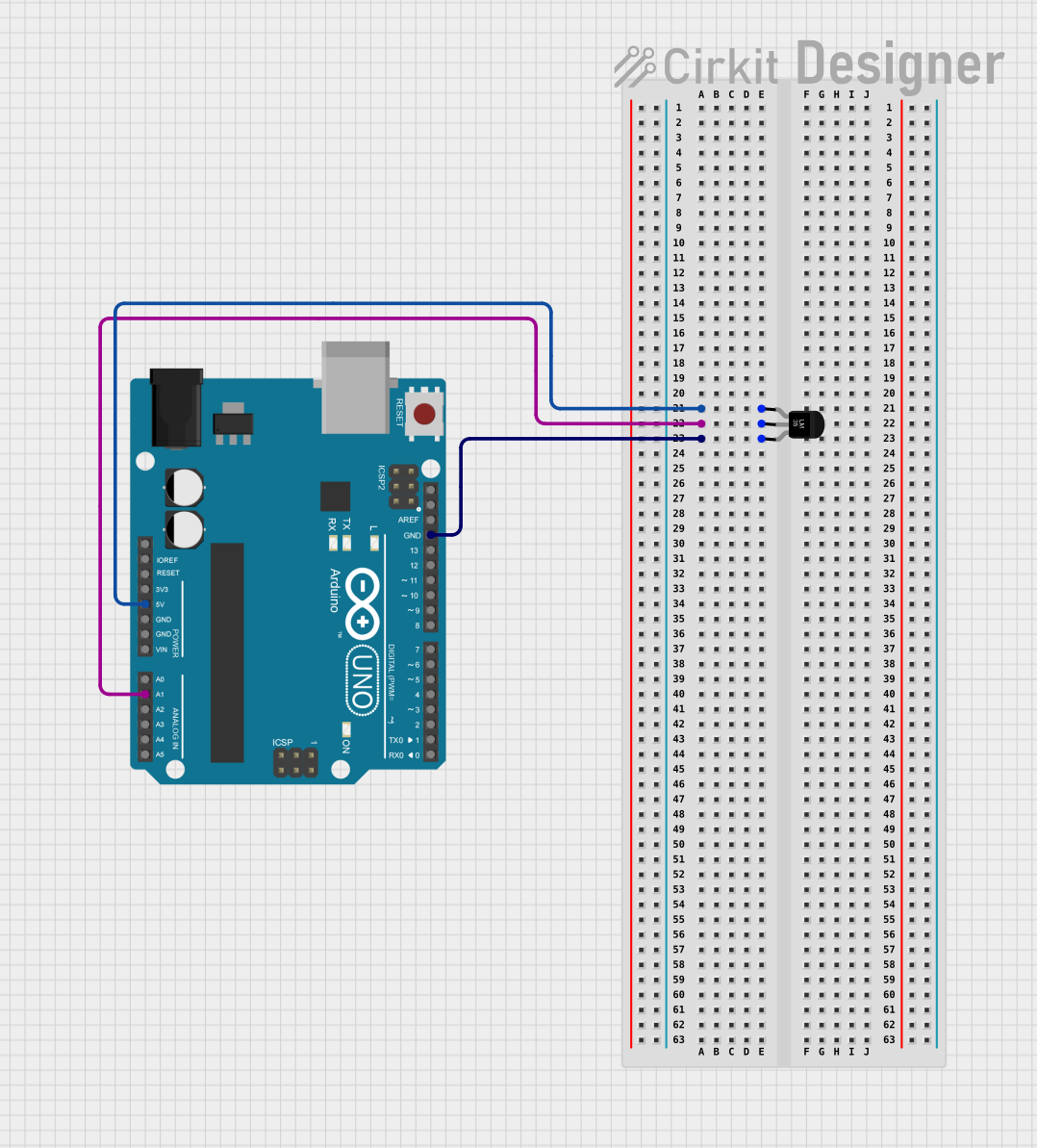
 Open Project in Cirkit Designer
Open Project in Cirkit DesignerExplore Projects Built with LM35 Temperature Sensor

 Open Project in Cirkit Designer
Open Project in Cirkit Designer
 Open Project in Cirkit Designer
Open Project in Cirkit Designer
 Open Project in Cirkit Designer
Open Project in Cirkit Designer
 Open Project in Cirkit Designer
Open Project in Cirkit DesignerCommon Applications and Use Cases
- HVAC systems for temperature monitoring and control
- Weather stations and environmental monitoring
- Industrial temperature sensing
- Home automation systems
- Medical devices for temperature measurement
- Educational projects and prototyping with microcontrollers (e.g., Arduino)
Technical Specifications
The LM35 is designed for ease of use and high accuracy. Below are its key technical details:
| Parameter | Value |
|---|---|
| Manufacturer | Texas Instruments |
| Part Number | LM35 |
| Operating Voltage Range | 4V to 30V |
| Output Voltage | 10mV/°C |
| Temperature Range | -55°C to +150°C |
| Accuracy | ±0.5°C (at 25°C) |
| Current Consumption | 60 µA (typical) |
| Output Impedance | 0.1 Ω (typical) |
| Package Options | TO-92, SOIC-8, TO-220 |
Pin Configuration and Descriptions
The LM35 is available in a 3-pin package (e.g., TO-92). Below is the pinout and description:
| Pin Number | Pin Name | Description |
|---|---|---|
| 1 | VCC | Power supply input (4V to 30V) |
| 2 | VOUT | Analog output voltage proportional to temperature |
| 3 | GND | Ground (0V reference) |
Usage Instructions
The LM35 is straightforward to use in a circuit. It outputs an analog voltage that corresponds to the temperature in degrees Celsius. The output voltage can be read directly by an analog-to-digital converter (ADC) on a microcontroller, such as an Arduino UNO.
Connecting the LM35 to an Arduino UNO
- Power the LM35: Connect the
VCCpin to the 5V pin on the Arduino and theGNDpin to the Arduino's GND. - Read the Output: Connect the
VOUTpin to one of the Arduino's analog input pins (e.g., A0). - Write the Code: Use the Arduino IDE to write a program that reads the analog voltage and converts it to temperature.
Example Arduino Code
// LM35 Temperature Sensor Example with Arduino UNO
// Reads the temperature in Celsius and prints it to the Serial Monitor
const int sensorPin = A0; // LM35 output connected to analog pin A0
float voltage; // Variable to store the sensor's output voltage
float temperature; // Variable to store the calculated temperature
void setup() {
Serial.begin(9600); // Initialize serial communication at 9600 baud
}
void loop() {
int sensorValue = analogRead(sensorPin); // Read the analog value (0-1023)
// Convert the analog value to voltage (assuming 5V reference voltage)
voltage = sensorValue * (5.0 / 1023.0);
// Convert the voltage to temperature in Celsius
temperature = voltage * 100.0; // LM35 outputs 10mV per degree Celsius
// Print the temperature to the Serial Monitor
Serial.print("Temperature: ");
Serial.print(temperature);
Serial.println(" °C");
delay(1000); // Wait for 1 second before the next reading
}
Important Considerations and Best Practices
- Power Supply: Ensure the LM35 is powered within its operating voltage range (4V to 30V). For Arduino projects, the 5V pin is typically sufficient.
- Noise Reduction: Use a decoupling capacitor (e.g., 0.1 µF) between
VCCandGNDto reduce noise in the output signal. - Long Cable Runs: If the LM35 is placed far from the microcontroller, use shielded cables to minimize interference.
- Temperature Range: Ensure the operating environment is within the LM35's specified temperature range (-55°C to +150°C).
Troubleshooting and FAQs
Common Issues and Solutions
No Output or Incorrect Readings
- Cause: Incorrect wiring or loose connections.
- Solution: Double-check the connections. Ensure
VCCis connected to a stable power source,GNDis properly grounded, andVOUTis connected to the correct analog input pin.
Fluctuating Temperature Readings
- Cause: Electrical noise or interference.
- Solution: Add a 0.1 µF decoupling capacitor between
VCCandGNDnear the LM35.
Output Voltage Does Not Match Expected Temperature
- Cause: Incorrect ADC reference voltage or calculation error.
- Solution: Verify the reference voltage used in the ADC calculation. For Arduino, the default reference voltage is 5V.
Overheating of the LM35
- Cause: Excessive current draw or incorrect power supply voltage.
- Solution: Ensure the power supply voltage is within the specified range (4V to 30V) and avoid drawing excessive current from the LM35.
FAQs
Q: Can the LM35 measure negative temperatures?
A: Yes, the LM35 can measure temperatures below 0°C. However, for negative temperatures, the output voltage will be below 0V, which may require additional circuitry to read.
Q: Can I use the LM35 with a 3.3V microcontroller?
A: Yes, the LM35 can operate at 3.3V, but the output voltage range will be limited. Ensure the microcontroller's ADC can accurately read the reduced voltage range.
Q: How accurate is the LM35?
A: The LM35 has an accuracy of ±0.5°C at 25°C. Accuracy may vary slightly at other temperatures, as specified in the datasheet.
Q: Do I need to calibrate the LM35?
A: No, the LM35 is factory-calibrated and does not require external calibration.
By following this documentation, you can effectively integrate the LM35 temperature sensor into your projects and troubleshoot common issues with ease.